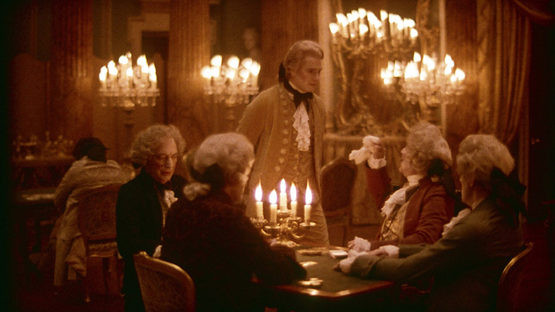🇺🇸 All posts are in service to The Republic, not the corporation, of the United States of America.
LED lighting is assaulting. It's going to set me back over $800 to replace all of the bulbs in this house with incandescent, mercury-free, full spectrum lamps. I just had to get that off of my chest. It's about frequency. Candles are my favorite but not always practical. This image is from Barry Lyndon by Stanley Kubrick and was shot with a low light lense on loan from NASA who also loaned Stanley NASA advisors for 2001- A Space Odyssey as you do when you're right in the middle of attempting to send men to the moon.
#darktolight
The good news today is that this low light capability is available for pretty much everybody with present day cameras and lenses. Many still screens of Barry Lyndon indeed look like they would be paintings. The candles on the table weren't all though, they had large chandeliers above. But they stick to the style, and it does show.
There are good and bad sides to LEDs. There's more blue, which is likely intended to delay your sleep. The LEDs are often driven with poorly constructed AC-DC converters, which make them flicker at a fast rate and produce parasitic currents to the electrical networks. Color mixing is way easier with LEDs.
LEDs replace tungsten filaments with gallium and arsenic and other hazardous compounds in the phosphors.
🇺🇸 All posts are in service to The Republic, not the corporation, of the United States of America.
I very much appreciate your informed opinion. My brother is a journeyman electrician but I have limited knowledge of electricity beyond some basic wiring I did for the Air Force. I go off of vibes. When I enter a space with fluorescent or LED lighting my impulse is to run. I might be more sensitive that most but I listen to that.
Not necessarily "informed", I've played quite a bit with them, it's well possible I've missed something.
Two things come to mind: cheaper end LEDs have higher color temperatures (+5000K) and not very good color rendering index --> makes illumination look more blue and often the reds suffer. Makes for a clinical appearance. Actual diagnostic white illumination appears more natural.
The second thing is that like the fluorescent tubes, the LEDs are very very fast. They react easily to the 50 Hz driving current and modulate themselves to it. Human vision works around 100 Hz near the center, while the periphery works around 300-600 Hz. And yes, I frequently see them flicker at the edge of vision.
If you need to switch light source on and off often, LEDs are good for that. Metal halide bulbs and filaments should run more constantly.

